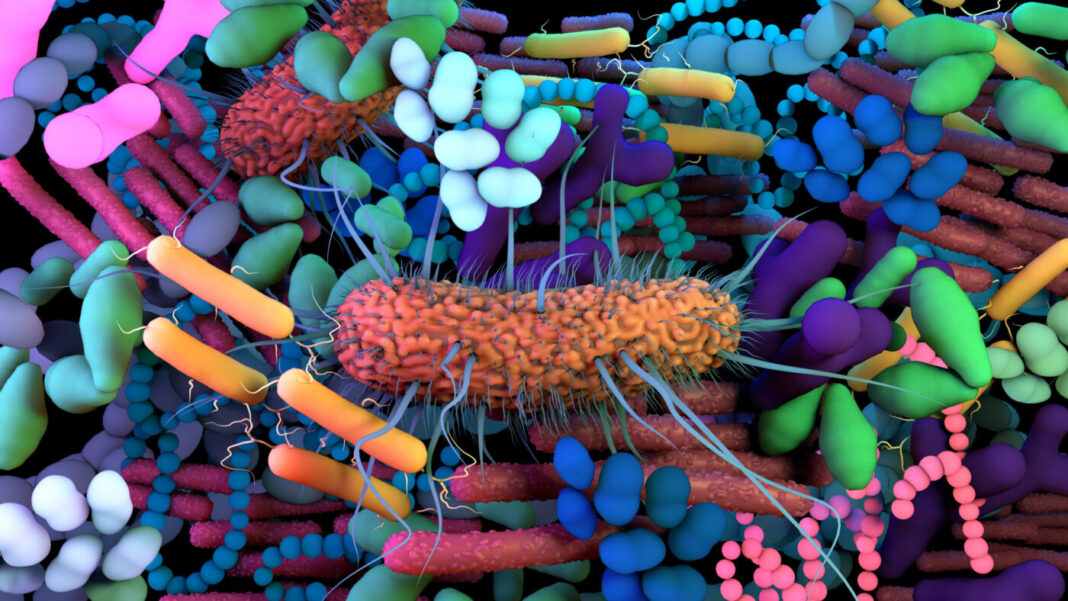A group of researchers led by Katie Pollard, PhD, director, Gladstone Institute of Data Science and Biotechnology, has published two new studies that demonstrate the importance of monitoring the strains of bacteria, and not just the species to improve the study of the microbiome.
“I think researchers have been missing a lot of information by just focusing on the species of microbes,” said Pollard, who is lead author of the two studies. “When we take a more fine-grained approach and look at the strains of bacteria, I predict that we’ll start finding causal links between the microbiome and diseases.”
In one study, “Fast and accurate metagenotyping of the human gut microbiome with GT-Pro,” published in the journal Nature Biotechnology, Gladstone Institute researchers collaborated with Stephen Nayfach, PhD, a research scientist at the U.S. Department of Energy Joint Genome Institute.
The team developed a new computational method to analyze the strains of bacteria present in a microbiome sample and believe this new method will enable researchers to carry out more precise analyses of the microbiome.
“Single nucleotide polymorphisms (SNPs) in metagenomics are used to quantify population structure, track strains, and identify genetic determinants of microbial phenotypes,” the researchers wrote. “However, existing alignment-based approaches for metagenomic SNP detection require high-performance computing and enough read coverage to distinguish SNPs from sequencing errors. To address these issues, we developed the GenoTyper for Prokaryotes (GT-Pro), a suite of methods to catalog SNPs from genomes and use unique k-mers to rapidly genotype these SNPs from metagenomes.
The second study was published in the journal Genome Research in a paper titled, “Longitudinal linked-read sequencing reveals ecological and evolutionary responses of a human gut microbiome during antibiotic treatment.”
“Here, we characterize the gut microbiome of a single individual at high temporal and genetic resolution through a period of health, disease, antibiotic treatment, and recovery,” the researchers wrote. “We used deep, linked-read metagenomic sequencing to track the longitudinal trajectories of thousands of single nucleotide variants within 36 species, which allowed us to contrast these genetic dynamics with the ecological fluctuations at the species level.”
The researchers collaborated with the labs of Benjamin Good, PhD, and Michael Snyder, PhD, at Stanford University to track the strains of bacteria present in one person’s microbiome at 19 different time points over a five-month period. They observed the abundance of a species of bacteria remained constant between time points, but the strains within that species changed dramatically.
High-performance computing power and cloud storage was required to identify genetic differences in a microbiome sample. The researchers sought to determine the minimum amount of sequence information to identify what strains it contained.
They analyzed over 100,000 publicly available genomes from approximately 900 bacterial species commonly found in the human gut. They discovered 104 million short strings of DNA in the bacterial genomes that vary most often between strains of bacteria. The team used GT-Pro, which searched the microbiome sequence data for exact matches to the key strings that act as identifiers for bacterial strains.
“With the explosion of newly sequenced genomes from the gut microbiome and other environments, we can now create detailed genetic maps for thousands of bacterial species,” said Nayfach. “Our approach leverages this prior information to rapidly and comprehensively identify the genetic variants in a microbiome sample without performing time-consuming sequence alignments.”
“Our new algorithm opens the door for everyone to be able to achieve this level of resolution on a personal computer,” said Pollard.
Pollard and her colleagues also analyzed how the strains of bacteria, rather than just species, change over time with antibiotics.
“What we assumed is that a lot of microbes would become less abundant with the antibiotics, and then recover, but the microbiome at the end would more or less resemble the microbiome at the start,” said Good, assistant professor of applied physics at Stanford.
Although the GT-Pro algorithm is not yet available to be used in this study, Pollard says it would make similar future studies much easier—and cheaper—to conduct.
“There’s still a lot of work to be done to understand the functional consequences of differences in the microbiome,” said Pollard. “But until now, we haven’t had the right measurement tools to ask these questions—and now we do.”



